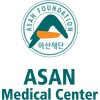
Study of Alpha-blockers Alone During Preoperative Preparation in Patients With Pheochromocytoma...
Adrenal PheochromocytomaHemodynamicStudy of the relationship between hemodynamic stability and preoperative intravenous rehydration in patients with pheochromocytoma

Selective Versus Nonselective Alpha-blockade Prior to Pheochromocytoma Resection - Systematic Review...
PheochromocytomaOur aim was to systematically evaluate the current data on the efficacy of pretreatment with either selective or nonselective alpha-blockade on the hemodynamic instability and morbidity during pheochromocytoma resection.

Effect of Chronic Catecholamine Overproduction on Brown Adipose Tissue
PheochromocytomaAdrenal IncidentalomaTo investigate the effect of catecholamine excess on brown fat. To evaluate the effect of brown fat on energy expenditure and lipid and glucose metabolism

123I-MIBG Scintigraphy in Patients Being Evaluated for Neuroendocrine Tumors
PheochromocytomaNeuroblastoma3 moreThe study is designed to study the safety and effectiveness of 123I-MIBG as a diagnostic imaging agent in evaluating patients with known or suspected neuroendocrine tumors.

Specificity of Elevated Plasma EM66 Levels in Pheochromocytoma
PheochromocytomaParaganglioma1 morePheochromocytoma or paraganglioma are tumors generating hypertension as a symptom. Different biological tests are currently available to diagnose these tumors. However, they all lack specificity since they do not distinguish cases of hypertension without pheochromocytoma or paraganglioma. To improve the diagnostic specificity of these tumors, the investigators are testing a new marker called EM66.

F-18 FDOPA PET/CT Versus I-123 MIBG Scintigraphy With SPECT/CT for the Diagnosis of Pheochromocytoma...
PheochromocytomaParagangliomaPheochromocytomas and paragangliomas (PPGLs) are chromaffin cells-derived tomours that originate from the adrenal medulla (80~85%) and the extra-adrenal sympathetic paraganglia in thorax, abdomen and pelvis (15~20%) or parasympathetic paraganglia in the head and neck region (~1%), respectively. Functional imaging, such as 123I-Meta-Iodobenzylguanidine (MIBG) scintigraphy with single photon emission computed tomography with a CT (SPECT/CT), offers high specificity for PPGL but necessitates 24-hour delayed imaging, pre-processing thyroid protection with a potassium iodide solution, and medication reconciliation to prevent the inhibition of 123I-MIBG uptake. Conversely, 18F-L-dihydroxyphenylalanine (FDOPA), a radiopharmaceutical for positron emission tomography (PET) imaging, is specifically absorbed and accumulated by chromaffin cells, offering better image quality and convenience compared to 123I-MIBG scintigraphy. 18F-FDOPA PET/CT has been approved for the localization, staging, and detection of PPGL recurrences in European and other countries. Therefore, the aim of this study was to compare prospectively the diagnostic performances of 18F-FDOPA PET/CT and 123I-MIBG scintigraphy with SPECT/CT in patients with PPGL.

I-123-MIBG for Imaging of Neuroblastoma and Pheochromocytoma
NeuroblastomaPheochromocytomaI-123-MIBG is used to image patients with neuroblastoma, pheochromocytoma and other neural crest tumors

Prevention of Conversion in Posterior Retroperitoneal Adrenalectomy by Measuring Preoperative Anatomical...
Adrenal TumorAdrenal Mass4 moreWith our retrospective study the investigators show the limitations of the posterior retroperitoneal adrenalectomy by analyzing anatomical parameters. The investigators compared the data from one patient who underwent a conversion with 13 patients without a conversion. Furthermore, they explored the influence of these parameters on the operation time and excluded the patient who had a conversion from this analysis. The investigators hypothesize that by determining anatomical characteristics on cross-sectional imaging (CT or MRI), they can show the limitations of the posterior retroperitoneal adrenalectomy to prevent patients from being converted to lateral transperitoneal adrenalectomy.

Expanded Access Protocol Using 131I-MIBG Therapy +/- Vorinostat for Refractory Neuroblastoma, Pheochromocytoma,...
NeuroblastomaPheochromocytoma1 moreCurrently there is no known effective treatment for patients with advanced stage neuroblastoma who have relapsed or not responded to standard therapy. There is also no known effective treatment for patients with pheochromocytoma or paraganglioma who are less than 12 years of age. In previous studies that used 131I-MIBG as a potential anti-cancer therapy, a decrease in the size of tumors was seen in some of the children and adults. This research study will continue to evaluate the side effects of 131I-MIBG +/- Vorinostat when treating children and adults with neuroblastoma, pheochromocytoma, or paraganglioma. The 131I-MIBG compound is intended to work by selectively delivering the radioactive iodine to the tumor cells, which is then intended to result in their destruction. The purpose of this research study is to: Make 131I-MIBG therapy available to patients with advanced neuroblastoma, pheochromocytoma, or paraganglioma Further assess the side effects of 131I-MIBG therapy

Cardiac and Vascular Changes in Pheochromocytoma and Paraganglioma
PheochromocytomaParaganglioma1 morePHEOCHROMOCYTOMA (PCC)/ PARAGANGLIOMA are catecholamine secreting tumors with varied manifestations. Besides hypertension, PCC patients may have subclinical to overt cardiac and vascular dysfunction, which are important to recognize to minimize perioperative morbidity and mortality. Cardiovascular (CV) dysfunction can be in the form of hypertension, left ventricular (LV) hypertrophy, heart failure, cardiomyopathy, dysrhythmias, angina and Myocardial infarction. Literature search revealed a few retrospective and a few prospective studies, including one prospective follow up study conducted at SGPGIMS to document CV changes in PCC. Our institutional study was the first to document the nature and extent of CV dysfunction and cardiomyopathy and their reversal after surgical cure. The studies revealed that PCC patients had significantly higher LV mass index, higher LV diastolic dysfunction, subclinical impaired LV systolic function. Earlier studies postulated apparent improvement in various cardiac indices even with selective α-blockade and continued after surgical cure, with near normalization at 3 -6 months postoperatively. Detailed cardiac and vascular evaluation in PCC patients can be of help in preoperative optimization of cardiac risk and may provide prognostic information The literature on PCC-mediated CV dysfunction and catecholamine cardiomyopathy is largely limited to case reports and retrospective studies, with few reports of their reversal after curative PCC operations. Whether the duration of disease influence the function of heart was not apparently addressed in earlier trials. Trials that established the differences in the degree of cardiac dysfunction between normotensive and hypertensive PCC patients involved smaller proportion of study subjects. Sub clinical changes in endomyocardium was presumed but not objectively assessed and hence its reversal after surgical cure is uncertain. The aim of this research is to study the cardiac and vascular changes in Pheochromocytoma/ Paraganglioma patients and their reversal following curative surgery
